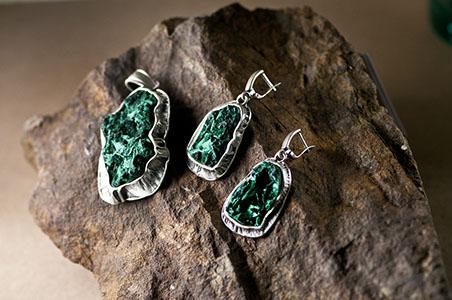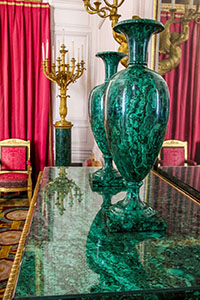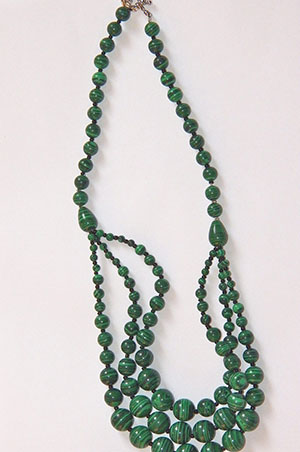Malachite Essentials: Properties, Origin and Uses
Introduction
Malachite, with its waves of green, will captivate any mineral enthusiast. Known for its rich green color and concentric patterns, this mineral has been valued through the ages for both its beauty and properties.
Formation and Origin
Malachite primarily forms in leaching zones where water infiltrating through copper-bearing rocks triggers chemical reactions that create this characteristic mineral. This process often occurs near copper deposits where azurite, another copper carbonate, can also transform into malachite. Specific geological conditions, such as the pH of the water and the presence of calcium carbonate, play a crucial role in this transformation. Major malachite deposits are located in the Democratic Republic of the Congo, Russia, Australia, and the United States, particularly in Arizona, where geological conditions favor the formation of high-quality malachite.
Leaching zones, often called leach zones, are geological regions where soluble minerals, such as copper, are dissolved and carried away by groundwater or surface water. This geological process occurs when water percolates through rocks and soils, extracting metallic ions and other soluble compounds. Leaching zones are particularly common in regions rich in metallic ores, where the interaction between water and minerals creates favorable conditions for the formation of new minerals, such as malachite in the case of copper.
Physical and Chemical Properties
Chemically, malachite is a hydrated copper carbonate, with the chemical formula Cu₂CO₃(OH)₂. It belongs to the monoclinic crystal system and is known for its softness, with a hardness of only 3.5 to 4 on the Mohs scale. Its density is 3.6 to 4 (meaning it weighs 3.6 to 4 times the volume of water).
The monoclinic crystal system is a category that describes how atoms are arranged in certain crystals. To understand it simply, imagine placing boxes in a room:
Shape of the box: In the monoclinic system, the box (or the crystal's unit cell) looks like a parallelepiped where two sides are of different lengths and the third side is yet another length. This gives the box a prism-like appearance.
Angles between the sides: The angles between two of the sides are right angles (90 degrees), but the angle between the bottom of the box and the sides is not right. This inclined angle gives the crystal its unique shape.
History and Uses
Historically, malachite was used as a pigment for green paints and as an ornamental stone in architecture and jewelry. In ancient Egypt, it was used to decorate makeup palettes and temple pillars. During the Victorian era, it was popular for inlays in furniture and decorative items.
Contemporary Applications
Nowadays, malachite is primarily used in jewelry, where its wave-like patterns are showcased in necklaces, bracelets, and earrings. It is also valued in the creation of art objects and decorative elements, such as vases, bowls, and even countertops.



Care and Conservation of Malachite
Malachite requires special care to maintain its beauty. Given its tendency to scratch easily and to react with weak acids, we recommend cleaning it with a soft cloth or very soft toothbrush and washing-up liquid or soapy water. Avoid leaving it in contact with chemicals.
Conclusion
Malachite, with its beautiful green color and stunning patterns, remains a favorite among mineral collectors and nature lovers. If you are interested in this mineral, we invite you to discover our collection of Malachites.
